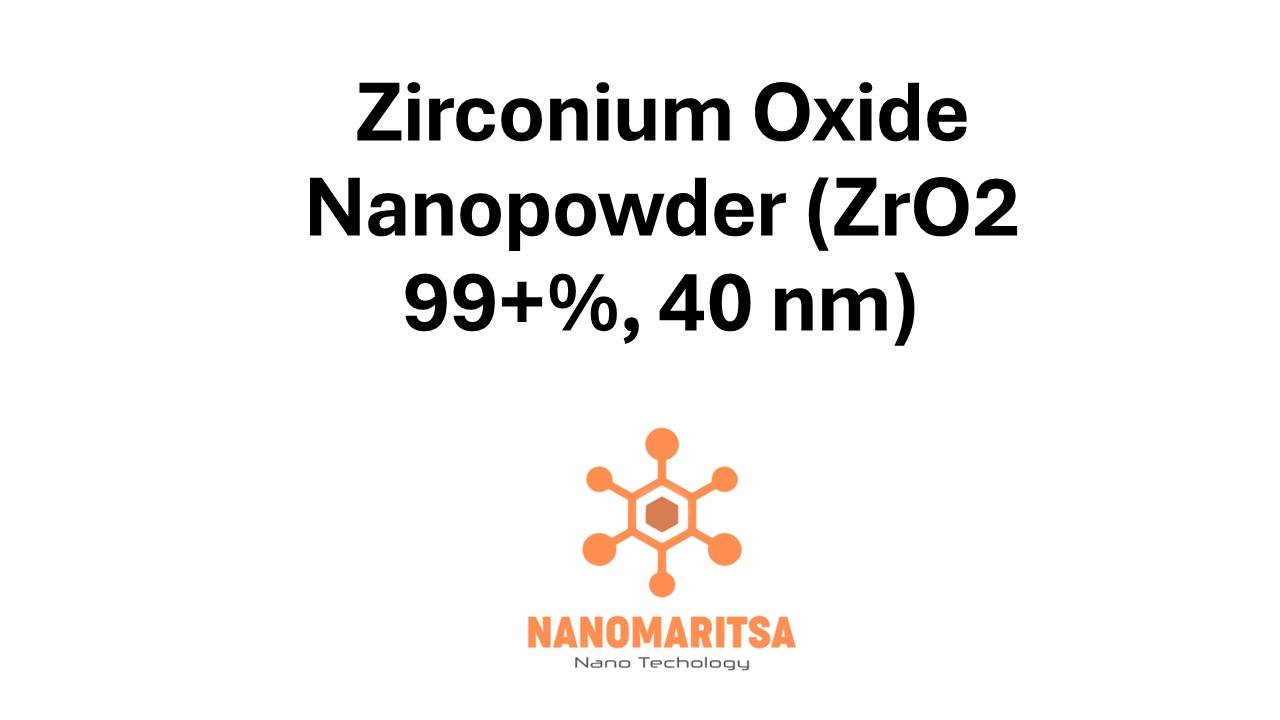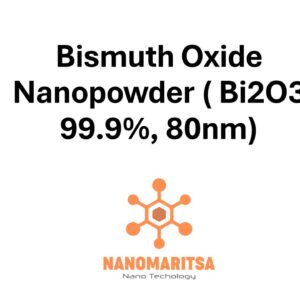Zirconium oxide (ZrO2) nanopowder with a particle size of 40 nanometers and purity of 99+% is a high-performance material used in a variety of applications due to its unique combination of mechanical, thermal, and chemical properties. This material is especially valued in fields that demand materials capable of withstanding high temperatures, mechanical stress, and aggressive chemical environments.
Composition and Structure
ZrO2 (Zirconium Oxide):
Zirconium oxide, also known as zirconia, is a ceramic material characterized by its high melting point (~2700°C), excellent hardness, and resistance to wear and corrosion. The nanopowder form has enhanced properties due to its small particle size, leading to a larger surface area and more reactive behavior compared to bulk zirconium oxide.
Purity (99+%):
With a purity of over 99%, this zirconium oxide nanopowder contains minimal impurities, ensuring high performance in demanding applications. The high purity reduces the risk of contamination in sensitive fields such as biomedical, electronic, and chemical applications.
Particle Size (40 nm):
The 40 nm particle size of the zirconium oxide nanopowder gives it a large surface area, which enhances its catalytic activity and mechanical properties. At the nanoscale, zirconia demonstrates unique behavior that can be tailored for various applications, such as improved strength and better dispersion in materials.
Properties
- High Mechanical Strength:
Zirconium oxide nanopowder is known for its excellent hardness and mechanical strength, making it ideal for use in applications where durability and resistance to wear are essential. The nanopowder form enhances these properties further, offering superior performance over larger particles or bulk material. - Thermal Stability:
Zirconium oxide has a very high melting point, which allows it to maintain structural integrity in extreme temperatures. This property makes it suitable for use in high-temperature environments such as industrial processes, aerospace, and automotive applications. - Chemical Inertness and Corrosion Resistance:
Zirconium oxide is chemically inert, which makes it resistant to acids, bases, and other corrosive substances. This property makes it particularly useful in harsh chemical environments and in applications requiring material stability over time. - Phase Stability:
Zirconium oxide exists in several crystalline phases (monoclinic, tetragonal, cubic), and its phase stability can be improved through doping with stabilizers like yttria (Y2O3). This enhanced phase stability, particularly in the tetragonal or cubic forms, increases the material’s mechanical properties, such as fracture toughness.
Applications
1. Ceramics and Composites:
Advanced Ceramics:
Zirconium oxide nanopowder is widely used in the production of advanced ceramics, especially for high-performance structural applications. It is used in cutting tools, abrasives, and wear-resistant components, as well as in the automotive and aerospace industries.
Biomedical Applications:
Zirconium oxide’s biocompatibility, strength, and corrosion resistance make it a popular choice for dental implants, orthopedic devices, and prosthetics. The 40 nm particle size helps improve the mechanical properties and surface characteristics of medical implants.
Ceramic Coatings:
Zirconia is often used in ceramic coatings for protection against high temperatures and corrosion. Its use in turbine blades, fuel cells, and engine components enhances the longevity and performance of these parts under extreme conditions.
2. Catalysis and Chemical Processing:
Catalyst Supports:
Zirconium oxide nanopowder is frequently used as a support for catalysts in various chemical processes. Its high surface area makes it an ideal material for enhancing the efficiency of catalytic reactions, such as in the petrochemical industry for cracking and reforming processes.
Fuel Cells:
In solid oxide fuel cells (SOFCs), zirconium oxide acts as a high-temperature electrolyte. Its ionic conductivity and stability under thermal stress are crucial for the efficient operation of fuel cells that generate electricity from hydrogen and oxygen.
Environmental Catalysis:
Zirconium oxide is also employed in catalytic converters and other environmental applications to reduce harmful emissions from industrial processes and vehicles.
3. Thermal Barrier Coatings:
Zirconium oxide is commonly used in thermal barrier coatings (TBCs) to protect components from extreme heat. The 40 nm nanopowder offers improved heat insulation properties and better durability compared to larger zirconia particles, making it ideal for high-temperature environments like gas turbines and jet engines.
4. Electronics and Optoelectronics:
Dielectric Materials:
Due to its high dielectric constant, zirconium oxide is used in electronic devices such as capacitors, where its ability to store electrical charge is essential. The nanopowder form offers enhanced performance for miniaturized devices and microelectronics.
Optical Coatings:
Zirconium oxide nanopowder is used in optical coatings for lenses and mirrors. Its high refractive index and optical transparency in the ultraviolet to infrared spectrum make it an excellent choice for high-performance optical components.
5. Research and Development:
Zirconium oxide nanopowder is also widely used in research applications for studying the properties of nanomaterials and for developing new materials with tailored characteristics. Its stability, reactivity, and versatility make it a valuable tool for material scientists and engineers.
Safety and Handling
Health Considerations:
Zirconium oxide is generally regarded as safe, but care should be taken to avoid inhalation or skin contact with nanopowders, as fine particles can pose respiratory or skin irritation risks. Protective equipment, including gloves, masks, and proper ventilation, is recommended when handling nanopowders.
Environmental Impact:
Zirconium oxide is chemically stable and not typically considered to pose significant environmental risks. However, as with all nanomaterials, research into their long-term environmental impact is ongoing, and proper disposal methods should be followed.
Summary
Zirconium oxide nanopowder (ZrO2, 99+%, 40 nm) is a high-purity material with excellent mechanical, thermal, and chemical properties, making it suitable for a wide range of advanced applications. Its small particle size enhances its performance, particularly in high-temperature environments, chemical processing, and biomedical devices. With its superior hardness, thermal stability, and corrosion resistance, zirconium oxide continues to be a vital material in industries such as aerospace, automotive, electronics, and energy.
| Measurement (gr) | 100 grams, 500 grams, 1000 grams |
|---|






